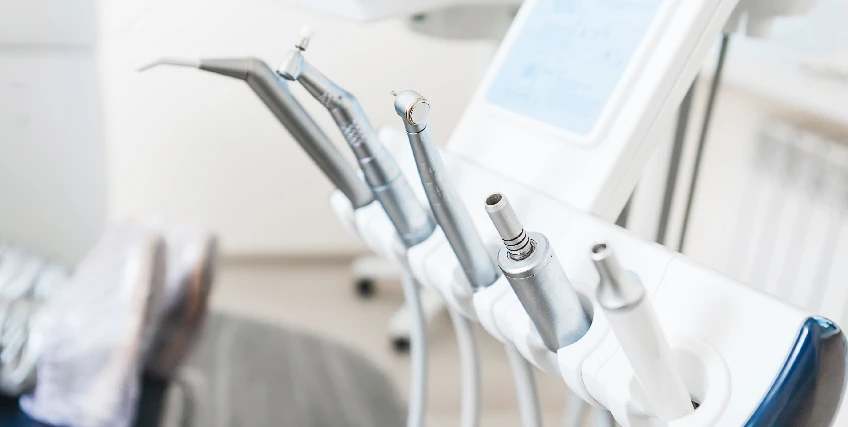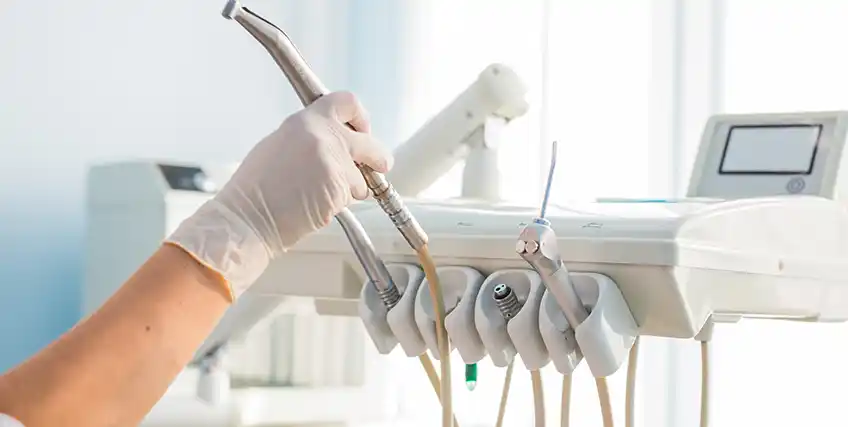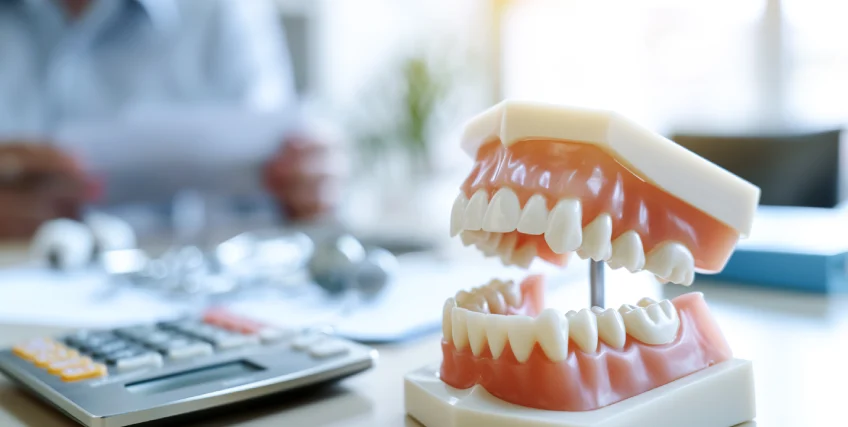Should You Buy or Lease Dental Equipment? A Financial Breakdown
November 26, 2025 | Last Updated on: November 26, 2025

If you're running a dental practice, the tools you use matter as much as your skills. From dental chairs and handpieces to intraoral cameras and x-ray systems, the right dental equipment defines your patient experience and operational flow. However, high-quality dental products come high costs and that raises a key question for many dental professionals: Should you buy dental equipment or lease it?
This decision goes beyond cost. It affects your cash flow, tax planning, and long-term business growth. Dental equipment lease options may look affordable upfront, but ownership comes with its own set of advantages. And with options like a dental equipment loan or dental funding, practices now have more ways to manage expenses.
If you're planning to expand, upgrade, or launch a new dental office, this guide will help. We’ll break down the financial pros and cons of buying vs. leasing, tax benefits, depreciation rules, and how each path impacts your bottom line.
By the end, you'll be in a stronger position to make the right call for your dental practice. Whether it’s a new CAD/CAM system or just basic polishing tools, this is the checklist you didn’t know you needed.
The Real Cost of Dental Equipment
Dental equipment is a major investment. A fully equipped operatory can cost around $500,000 depending on your needs. For example, a dental chair may cost $10,000–$20,000, while an x-ray machine ranges between $6,000 and $20,000. CAD/CAM systems and 3D imaging tech can push costs even higher.
If you're looking to buy dental equipment, expect to pay upfront for compressors, sterilizers, handpieces, ultrasonic scalers, and other critical devices.
Costs don’t end at purchase. You’ll need to factor in delivery system setup, warranties, maintenance, and eventual upgrades. A dental equipment loan can help cover these expenses, but repayment terms vary widely.
If you're considering a dental equipment lease, understand that lower monthly payments often mean higher long-term costs. Still, for new or growing practices, it may help with cash flow and keep the latest healthcare technology within reach.
No matter what you choose, think about total cost of ownership. The wrong decision can put strain on your budget and limit future upgrades.
Pros and Cons of Buying Dental Equipment
Buying dental equipment gives you complete control and long-term value, but it also demands more capital upfront. Here's a closer look.
Benefits of Buying
When you buy dental equipment, you own it outright after full payment or once a dental equipment loan is paid off. That means no recurring lease fees, and you can use the asset as you see fit. Ownership also qualifies you for tax depreciation benefits under Section 179 of the IRS tax code. You can even sell the equipment later or trade it in.
If you plan to use high-speed handpieces, x-ray units, or advanced CAD/CAM tech for many years, ownership makes sense. It’s also ideal for practices with strong cash flow or access to dental funding. And because it's yours, there's no penalty for wear or extended use.
Drawbacks of Buying
But buying has real downsides. The upfront cost to buy dental equipment can tie up working capital. Even if you use a dental equipment loan, you'll face higher monthly payments compared to leasing. If you’re running a new dental practice, this may put stress on cash flow needed for staff, marketing, or rent.
There's also the risk of obsolescence. Some tools like imaging systems or intraoral scanners become outdated in just a few years. Selling used dental equipment isn’t always easy, and resale value drops fast. Warranty expirations can also lead to high maintenance costs. If flexibility is key, buying may not be the right fit.
Pros and Cons of Leasing Dental Equipment
Leasing helps preserve cash and gives access to newer tech faster. But it comes with recurring costs and less control.
Benefits of Leasing
A dental equipment lease requires little to no upfront payment. This helps new dental offices conserve cash for other needs like hiring, training, or marketing. With predictable monthly costs, budgeting is easier. You may also get access to the latest dental products including ultrasonic scalers, CAD/CAM systems, and extraoral imaging devices without worrying about resale value.
Leasing also simplifies upgrades. Once the term ends, you can switch to newer dental equipment without selling the old units. This is especially helpful if your practice offers cosmetic or orthodontic services where patient expectations are high. And with built-in warranties, repair risks are lower.
Drawbacks of Leasing
Over time, leasing may cost more than buying. When you lease dental equipment, you’re essentially renting it. You don’t build equity, and you can’t sell the item later. If you renew or extend a lease, total payments may exceed the equipment’s actual value.
Some dental equipment lease agreements come with strict terms. Exceeding usage limits or returning damaged equipment may result in penalties. You also have less flexibility to modify or relocate certain tools like vacuum pumps, compressors, or autoclaves. For stable, long-term practices that don’t need frequent upgrades, leasing may feel restrictive. You’re paying for convenience but not control.
How Dental Equipment Financing Works
Financing your dental equipment doesn’t have to be complex. Whether you’re launching a new dental practice or upgrading your delivery system, options exist to manage costs without draining capital. These include traditional bank loans, SBA-backed plans, and private business funders offering dental funding.
Some practices also use a dental equipment loan to purchase outright, while others choose structured leases with end-of-term buyouts. Each option impacts your payments, interest, and ownership differently. Here’s a breakdown:
Traditional Bank Loans
Banks offer term loans for practices wanting to buy dental equipment. Rates vary based on credit score and business history. You get a lump sum upfront and repay it over 3–10 years. These loans are good for larger equipment like x-ray machines, CAD/CAM systems, or a full operatory setup.
You may also qualify for Section 179 tax deductions. But approvals can take time, and collateral may be required. If your practice is well-established, this option offers clear ownership and predictable payments.
SBA Loans
SBA 7(a) loans are commonly used to finance dental equipment. They offer lower rates and longer terms than most private loans. You can use SBA funds to cover tools like sterilization units, curing lights, headrests, and more.
These loans are backed by the Small Business Administration but issued through banks. While the application process is longer, the terms are favourable—especially for high-cost investments. They’re best for practices that can wait a few weeks and want to own equipment with lower monthly payments.
Equipment Leasing Programs
Some companies offer dental equipment lease programs designed for healthcare professionals. These let you rent equipment for a fixed term, often with a purchase option at the end. It’s ideal if you need frequent upgrades or don’t want to tie up funds.
Monthly payments are often lower than loans, but total cost may be higher. Tools like ultrasonic scalers, evacuation systems, and rubber dam kits are commonly leased. Look out for maintenance terms and warranty clauses.
Online Dental Funding Options
Fast, flexible dental funding is now available online through business finance providers. These platforms offer quicker approvals, minimal paperwork, and funding for both lease and purchase.
They’re useful if you need dental equipment urgently like replacing a broken autoclave or adding a second dental chair. Rates may be higher than banks, but convenience is key. Practices also use this option to bundle supply costs like impression material, disinfectants, or carbide burs into one package.
Tax Implications: Lease vs. Buy
Understanding how the IRS treats dental equipment purchases versus leases can make a big difference in your annual tax bill. If you buy dental equipment, you may be able to deduct a significant portion of the cost using Section 179. This allows practices to write off up to $1.22 million in qualified dental products purchases in the same year they’re placed in service. You also get depreciation benefits spread over five to seven years.
Leasing offers a different kind of advantage. With a dental equipment lease, monthly payments are typically treated as a business expense. That means you can deduct them as an operating cost. This is helpful for newer dental offices that need to lower taxable income and keep cash flow flexible.
But the choice depends on your goals. If you plan to hold the equipment long-term, buying may offer greater deductions over time. If you want lower taxable income today, leasing might help. Be sure to talk to a tax advisor before deciding.
Keep in mind that not all dental equipment funding qualifies for the same deductions. Timing, usage, and the type of item such as x-ray systems or compressors can affect your eligibility.
Cash Flow Impact and Practice Growth
Choosing whether to lease or buy dental equipment directly impacts how much cash your practice has on hand. Buying large tools like CAD/CAM mills or intraoral scanners can put pressure on your working capital. Even with a dental equipment loan, high monthly payments may restrict other spending.
Leasing preserves your liquidity. You can spread out payments over years, which keeps your budget more predictable. This helps when managing staff payroll, rent, or investing in patient experience improvements like digital imaging or upgraded delivery systems.
For growing dental practices, keeping cash free can be more valuable than ownership. Let’s say you need to open a second location, hire an associate, or add new orthodontic services having money available may be more important than owning your dental chair or scalers.
But leasing also adds a recurring fixed expense. That affects your net income and can lower borrowing power down the road. If you plan carefully, a dental funding strategy can balance equipment needs with expansion goals.
In both cases, use a simple cash flow forecast. Factor in not just monthly payments but repair costs, warranty length, and replacement timelines. It’s about staying agile without compromising on care.
Buying vs. Leasing: What’s Right for You?
There’s no universal rule for choosing between leasing and buying. But your business size, cash reserves, and equipment needs should guide you.
If you're running an established dental office with reliable revenue, buying gives you long-term value and tax benefits. For example, buying high-speed tools or ultrasonic scalers that last 7–10 years may cost less over time.
If you're a startup or expanding, a dental equipment lease could offer more flexibility. You’ll avoid large upfront costs and preserve cash for hiring, marketing, or buying dental supply inventory. Leasing is also useful when working with rapidly evolving tools like CAD/CAM, digital x-ray, or curing light units.
| Criteria | Buy | Lease |
|---|---|---|
| Ownership | Yes | No |
| Upfront Cost | High | Low |
| Tax Benefits | Depreciation + Section 179 | Expense Deduction |
| Flexibility | Low | High |
| Long-Term Cost | Lower | Higher |
In the end, balance your current needs with your future growth. Talk to a CPA or finance expert familiar with dental equipment to avoid costly mistakes.
Conclusion
Whether you buy dental equipment or lease it, the goal is the same - equip your dental practice for success without compromising cash flow or care quality. Buying is better if you want full control and can afford the upfront cost. Leasing works if flexibility and cash preservation are more important.
Use a clear plan. Whether it’s a compressor, autoclave, or evacuation unit, match your equipment type with how long you’ll use it and how fast the tech changes. And don’t forget to factor in warranty, patient care standards, and tax outcomes.
If you're unsure, start small. Use dental funding for what you need now, and review again as your practice grows.
FAQs on Dental Equipment
What types of dental equipment are best to lease?
Items with fast tech cycles like CAD/CAM systems, digital x-ray, and intraoral scanners are ideal for leasing. A dental equipment lease helps you upgrade faster and avoid owning outdated technology. This is useful for cosmetic or tech-driven dental practices that need to stay current to attract patients.
Can I switch from leasing to owning later?
Many dental equipment lease agreements offer end-of-term purchase options. You can buy the equipment at a residual value. This works well for tools like dental chairs or compressors that you want to keep beyond the lease. It gives flexibility to test before you commit long-term.
Are loans or leases easier to qualify for?
Qualifying for a dental equipment lease is often faster and easier than securing a dental equipment loan. Lease approvals focus more on revenue flow, while loans require strong credit and longer history. Startups often prefer leases for this reason. But loans give ownership and long-term savings.
Does leased equipment come with warranties?
Most leased dental equipment includes service and warranty coverage for the full term. This reduces out-of-pocket repair costs. Whether it’s an ultrasonic unit or scalers, leasing can help avoid sudden maintenance bills. Be sure to check the fine print in your lease agreement.
How often should dental equipment be replaced?
High-use tools like handpieces, carbide burs, and rubber dam kits may need yearly updates. Larger items like dental chairs, autoclaves, or compressors last 7–10 years. If tech evolves quickly or repair costs rise, replacement is smarter than repair.
Frequent searches leading to this page
Term Loans are made by Itria Ventures LLC or Cross River Bank, Member FDIC. This is not a deposit product. California residents: Itria Ventures LLC is licensed by the Department of Financial Protection and Innovation. Loans are made or arranged pursuant to California Financing Law License # 60DBO-35839




